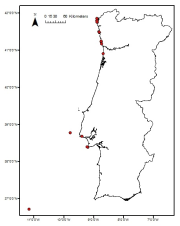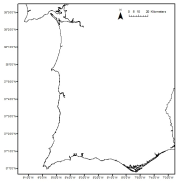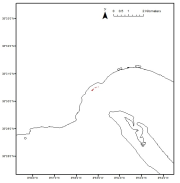Biota
Type of resources
Available actions
Topics
Keywords
Contact for the resource
Provided by
Years
Formats
Representation types
Update frequencies
status
Scale 1:
Resolution
-
<p>The dataset includes age- and length-based catch per unit effort data for commercial fish species collected during the Scottish Rockall Survey. This is a new survey from 2011, replacing historical ROCKALL survey in DATRAS.</p>
-

Laminaria ochroleuca distribution in the Portuguese mainland from historical data. Data provided by the Project FindKelp and published in: ÔÇ£Findkelp, a GIS-based Community Participation Project to Assess Portuguese Kelp Conservation StatusÔÇØ. Journal of Coastal Research (2009) :SI 56 (1469-1473)
-

Cymodocea nodosa meadows distribution in the south of Portugal from historical data. Data provided by the Life Project BIOMARES and published in: ÔÇ£Seagrasses in Portugal: A most endangered marine habitatÔÇØ. Aquatic Botany. doi:10.1016/j.aquabot.2011.08.007. ÔÇ£Estimation of available seagrass meadows area in Portugal for transplanting purposes ÔÇØ. Journal of Coastal Research (2009) :SI 56 (1100-1104)
-

Zostera noltii meadows distribution in the Portuguese mainland from historical data. Data provided by the Life Project BIOMARES and published in: ÔÇ£Seagrasses in Portugal: A most endangered marine habitatÔÇØ. Aquatic Botany. doi:10.1016/j.aquabot.2011.08.007. ÔÇ£Estimation of available seagrass meadows area in Portugal for transplanting purposes ÔÇØ. Journal of Coastal Research (2009) :SI 56 (1100-1104)
-

Maerl beds distribution in the Portuguese mainland from historical data. Data published in: ÔÇ£Present distribution of maerl beds in the Atlantic Iberian PeninsulaÔÇØ. Museologia Scientifica e Naturalista. Volume Speciale 2009
-
This data product is an R Shiny application that discloses the data collected by the National Institute of Oceanography and Experimental Geophysics (OGS) in the North Adriatic-Gulf of Trieste LTER. A time series has been built of observations on the species composition of the plankton. The application shows the evolution over time of abundance of major groups of species, as well as the most frequent species (or other taxonomic units) in the dataset. There is also a multivariate representation based on a PCA of abundances of the most frequent species, which shows the seasonal (monthly) fluctuations and the long-term (yearly) trend, and the contribution of each individual species to the temporal evolution of the community.
-
This data product is a series of gridded abundance maps for 40 zooplankton species from 2007 to 2013 in the Baltic Sea, based on a neural network analysis. As input data a combination of EMODnet Biology datasets were used, together with the environmental variables dissolved oxygen, salinity, temperature, chlorophyll concentration bathymetry and the distance from coast. Additionally the position (latitude and longitude) and the year are provided to the neural network. DIVAnd (n-dimensional Data-Interpolating Variational Analysis) and the neural network library Knet were used in this analysis.
-
Black corals are antipatharian corals that occur from sublittoral to abyssal depths on hard, mixed and soft substrates. Under favourable conditions, some black coral species form dense stands known as black coral gardens which create habitat for a variety of associated species.
-
Circalittoral faunal turfs are animal-dominated shelf assemblages that are found on hard substrata between the lower limit of the infralittoral zone and the shelf edge. Benthic organisms generally form dense intricate mixes that may include tall alcyonarians, sponges, hydroids, scleractinians and gorgonians, as well as less prominent fauna such as encrusting sponges, bryozoans, ascidians, bivalves, solitary cup corals, serpulid worms and vermetid gastropods.
-
Rhodoliths is a general term used to designate non-geniculate coralline red algae (Rhodophyta) that live unattached (Riosmena-Rodríguez, 2017). The term is used here to encompass (i) branched free-living coralline algae devoid of an evident nucleus, but also (ii) nucleated nodules where the biogenic calcium carbonate deposit around the core represents >50%, as well as (iii) “coated grains” where the core is larger than the algal carbonate component.
 EMODnet Product Catalogue
EMODnet Product Catalogue